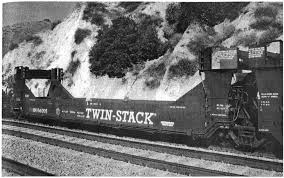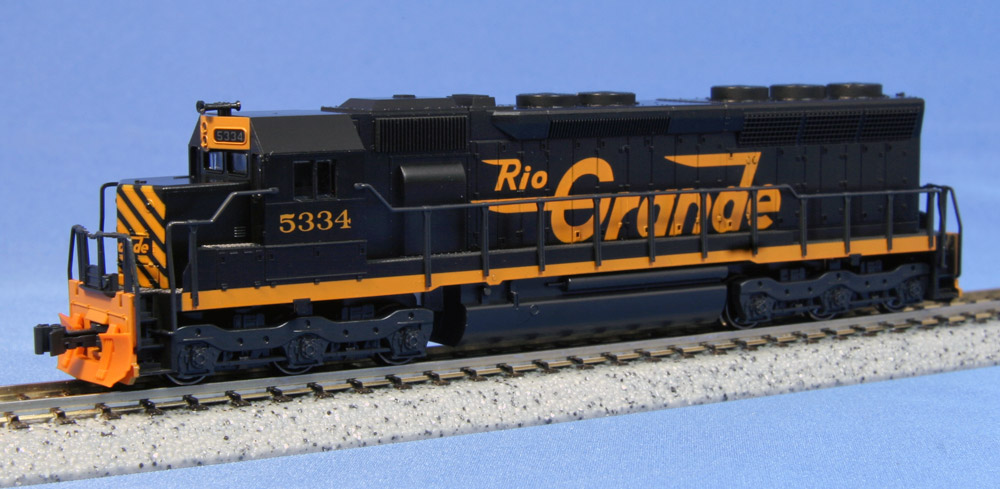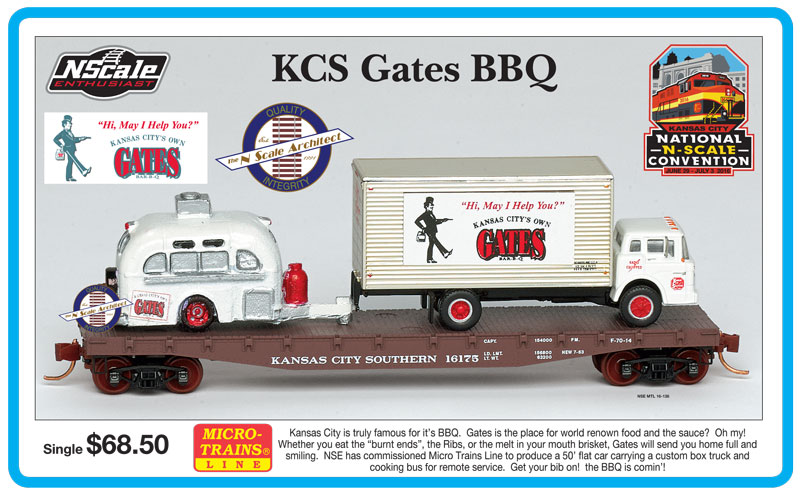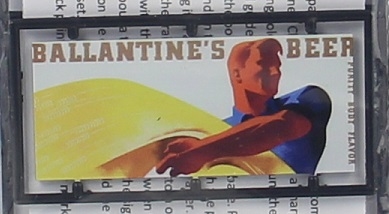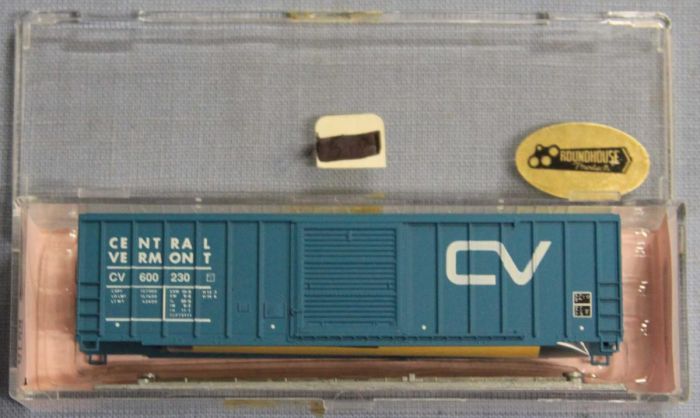History: A well car, also known as a double-stack car or stack car (also well wagon), is a type of railroad car specially designed to carry intermodal containers (shipping containers) used in intermodal freight transport. The "well" is a depressed section which sits close to the rails between the wheel trucks of the car, allowing a container to be carried lower than on a traditional flatcar. This makes it possible to carry a stack of two containers per unit on railway lines (double-stack rail transport) wherever the loading gauge assures sufficient clearance. The top container is secured to the bottom container either by a bulkhead built into the car (e.g., bottom and top containers are the same dimensions of 40 ft.), or through the use of inter-box connectors (IBC). Four IBCs are needed per wellcar. In the process of an inbound train becoming an outbound train, there are four processes: unlock to unload the top container of inbound train, remove then unload bottom container, insert after loading bottom container of outbound train, lock after top container loaded.
Double-stack container trains first hit the rails for regular service in 1981. The Southern Pacific Railroad had developed the idea to provide service for the Sea- Land maritime shipping company. SP's pioneering double-stack service let Sea- Land's containers take a shortcut from the west coast to the Gulf of Mexico bypassing the Panama Canal. From prototype car to production order, the SP spent a little over four years on the double-stack development project. The SP's double-stack cars featured unwieldy bulkheads on each end to prevent the loose top container from blowing off of the car.
The support for the upper container came from inter-box connectors (IBCs) which had been used for years in oceangoing container shipping.
The Twin-Stack was the first entry of Gunderson into the well-car market. It was introduced in 1985. The car had 40-foot wells and can carry 45-foot container in the top end positions, but only 40-foot containers in the intermediate positions. Gunderson updated the design by removing the bulkheads to create the Maxi-Stack (later renamed Maxi-Stack I).
Double-stack container trains first hit the rails for regular service in 1981. The Southern Pacific Railroad had developed the idea to provide service for the Sea- Land maritime shipping company. SP's pioneering double-stack service let Sea- Land's containers take a shortcut from the west coast to the Gulf of Mexico bypassing the Panama Canal. From prototype car to production order, the SP spent a little over four years on the double-stack development project. The SP's double-stack cars featured unwieldy bulkheads on each end to prevent the loose top container from blowing off of the car.
The support for the upper container came from inter-box connectors (IBCs) which had been used for years in oceangoing container shipping.
The Twin-Stack was the first entry of Gunderson into the well-car market. It was introduced in 1985. The car had 40-foot wells and can carry 45-foot container in the top end positions, but only 40-foot containers in the intermediate positions. Gunderson updated the design by removing the bulkheads to create the Maxi-Stack (later renamed Maxi-Stack I).
Railroad/Company: Gunderson traces its roots to 1919 when Chet Gunderson opened Wire Wheel Sales and Service Company of Portland, Oregon. His brother, Al Gunderson joined in 1923 and shortly thereafter Gunderson Brothers was born. They became a leading steel fabricator and manufactured thousands of vital ship components during World War II. They also built lifeboats and life rafts: 3,600 by 1945.
Peace-time barges began in 1949 and the first order of railcar underframes came in 1958. In 1985, The Greenbrier Companies acquired the former Gunderson Brothers operations from FMC Corporation and restored the Gunderson name to the Portland waterfront. Since that time, Gunderson has established itself as a leader in engineering and manufacturing railcars and marine barges.
As of 2018, Greenbrier's Gunderson division is one of the largest producers of intermodal railcars.
Peace-time barges began in 1949 and the first order of railcar underframes came in 1958. In 1985, The Greenbrier Companies acquired the former Gunderson Brothers operations from FMC Corporation and restored the Gunderson name to the Portland waterfront. Since that time, Gunderson has established itself as a leader in engineering and manufacturing railcars and marine barges.
As of 2018, Greenbrier's Gunderson division is one of the largest producers of intermodal railcars.
Item Links: We found: 1 different collections associated with Rail - Rolling Stock (Freight) - Articulated Well, Twin-Stack
- Collection N Scale Model Trains: 50 different items.
Item created by: Powderman on 2018-09-30 12:11:31. Last edited by Alain LM on 2021-04-08 12:42:55
If you see errors or missing data in this entry, please feel free to log in and edit it. Anyone with a Gmail account can log in instantly.
If you see errors or missing data in this entry, please feel free to log in and edit it. Anyone with a Gmail account can log in instantly.


